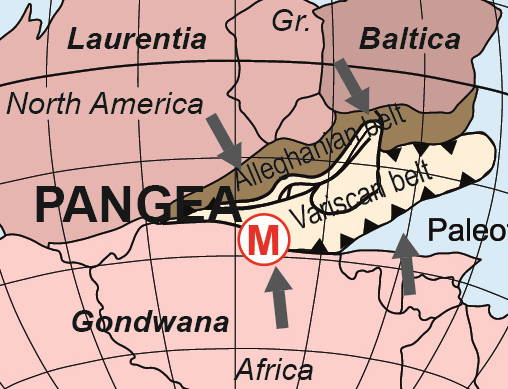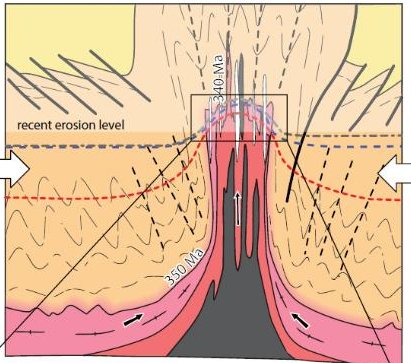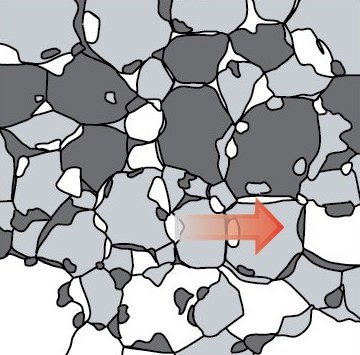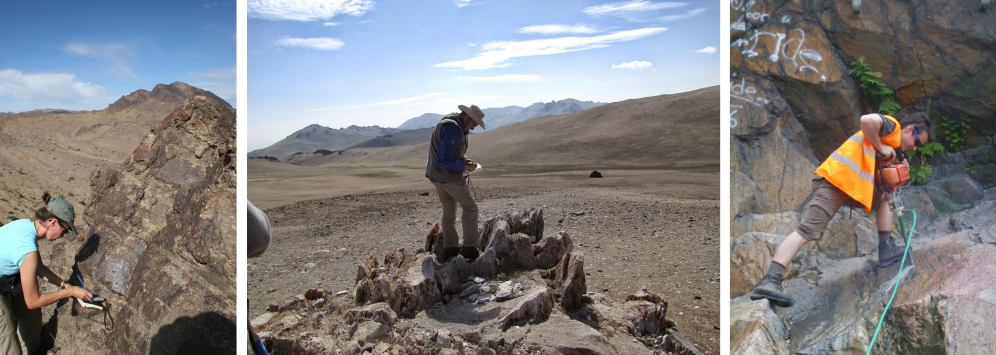Research
Research priorities
Research at the CLR focuses on the characterisation, imaging, quantification, and modelling of geodynamic Earth systems related to convergent plate boundaries. The majority of our research is centered around two natural laboratories: the European and North African Variscan belt, which provides an example of a collisional orogen, and the Central Asian Orogenic Belt, representing the Earth largest accretionary orogen. These regions serve as a reference for understanding processes operating during formation of the last supercontinent Pangea.
Collisional orogens are characterized by the recycling of crustal material resulting from the amalgamation of continental blocks and deep subduction of a lower continental plate beneath an upper plate. The principal issue studied by the CLR related to continental convergence is the process of formation of (ultra-)high-pressure rocks and their exhumation either along the plate interface or within the orogenic root domain. This process resulted from complex interactions between colliding microplates amalgamated prior to major reconfiguration of Laurussia and Gondwana ...
read more
Accretionary orogens are long lived (several hundred million years) orogenic systems currently developed along the Pacific convergent margins. Here, the process of accretion of oceanic sediments, continental blocks, arcs and back arcs along subduction zones is well characterized, but it remains obscured in fossil orogenic belts due to subsequent reworking. The tectonic evolution of a fossil accretionary system ...
read more
Melt transfers mass, heat and volatiles from the Earth’s depth towards the surface. Melting and subsequent melt migration therefore crucially affect the chemical and thermal structure of the lithosphere. There are two distinct melting processes in the continental crust: dehydration melting involving breakdown of hydrated silicates and water-fluxed melting that requires the presence of hydrous fluid. Dehydration melting of continental rocks is relatively well understood and documented. Here at CLR we focus on ...
read more
Research approaches
We adopt a multidisciplinary approach that includes geological and geophysical methods, numerical and analogue modelling. By combining of these methods, we develop large-scale syntheses and conceptual models of tectonic processes. Below are the most characteristic research approaches in our center.
The construction of pressure-temperature-time-deformation (P-T-t-d) paths in orogens is one of the most successful approaches developed by CLR team members during the last decades. This approach ...
read moreMelting and orogeny are intimately related process but understanding of melt transfer through crust is still limited to the classical concept of melt segregation and transfer through crust via veins and plutons ...
read moreThe chemical and isotopic compositions of minerals and whole rock samples provide powerful tools for characterising the geodynamic environment in which rocks were originally emplaced or deposited. We have used these approaches ...
read moreWe use mainly potential methods like gravity and airborne magnetic data in order to examine deep structure of studied orogenic systems ...
read moreNumerical and analogue modelling has been applied to solve a range of geodynamic problems related to convergent tectonics in the Variscides, Tibetan-Himalayan system and Central Asian Orogenic Belt ...
read more



